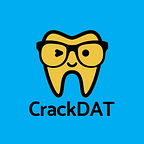A handy guide to manual dexterity: What it is and why it matters
This pre-dental blog is brought to you by Crack the DAT. Crack the DAT offers all the resources you need to ace your Dental Admission Test, all in one place! Try it today: CrackDAT.com
Manual dexterity: it’s so important that it gets its own section on the ADEA AADSAS dental school application! But what is it, why does it matter, and how can you strengthen this skill? In this article, we answer these questions and more, so read on!
What is manual dexterity?
Manual dexterity — known more informally as hand skills or motor skills — is the ability to use your hands to make precise, controlled, skillful movements. Imagine a painter using a small paintbrush to add tiny details to their canvas, a dentist using a handpiece to precisely remove the decay from a tooth, or a pianist using their fingers to strike precisely the correct keys. All of these actions require manual dexterity.
What does the ADEA AADSAS application ask about manual dexterity?
When you apply to dental school via the ADEA AADSAS application, there will be a section where you will disclose the hobbies or experiences that develop your manual dexterity. You will want to give at least 2–3 examples in this section, or as many as applicable. Below are some activities you might include:
- Playing a musical instrument (like guitar, piano, clarinet)
- Painting
- Sculpture/pottery
- Crochet/knitting
- Making friendship bracelets or jewelry
- Makeup/makeup artistry
- Nail art
- Tying knots (e.g., for fishing or wilderness skills)
Remember, although it’s ideal to give a few good examples in this section of the application, it’s most important to be honest. The last thing you want to do is exaggerate or claim to do an activity that you never do!
Will this be discussed in my dental school interviews?
It very well may be! Some interviewers may ask you to expand more on the activities you mentioned in your application. We recommend you prepare for the possibility of being asked about manual dexterity by bringing examples of your work, if applicable, to your interview. For example, you might come prepared with a couple of pictures of paintings you’ve done or items you’ve knitted, or a few samples of jewelry you’ve made. You may not be asked about your manual dexterity at all, but it’s always best to be prepared!
How can I improve my manual dexterity?
What if you don’t already have any manual dexterity-developing hobbies? It’s never too late to start — in fact, it’s in your best interest to take up at least one of these activities before starting dental school! Even dedicating just a couple of hours each week to developing your skills and improving your hand-eye coordination is worth your while. It’s perfectly fine to mention on your application that you’re in the process of learning or developing a skill such as playing an instrument or creating art.
Does this really matter for dental school?
Yes, it does! In dental school, you will learn how to do ideal preparations for fillings, crowns, and the like — all of which often must be accurate to the millimeter, correctly oriented, and precise! You will use periodontal instruments in a precise, controlled way to remove calculus from teeth and their roots. Manual dexterity, precision, and control are hugely important in dentistry, and although these skills will certainly continue to develop the more you practice dentistry, it’s a great idea to start developing these skills now, as a pre-dental student.
We hope this provided you with a helpful overview of manual dexterity. If you have any questions or advice for pre-dental students, let us know in the comments. Thanks for reading!
—
Join the Crack the DAT community, connect with other pre-dental students, and ask questions! Join the Facebook group here.
Crack your Dental Admission Test! Visit our website at CrackDAT.com.
